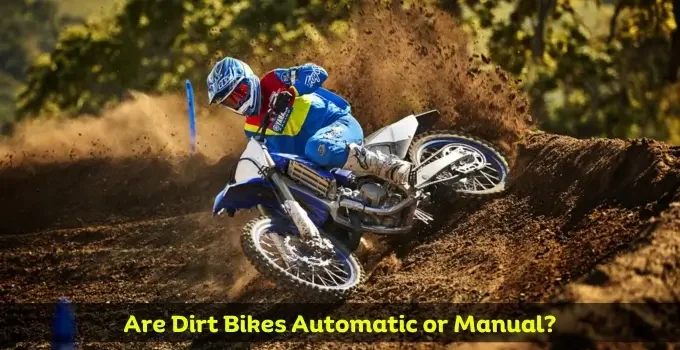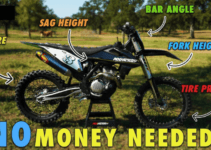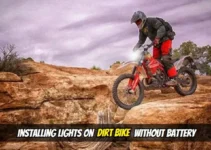What’s a Manual Dirt Bike?
A manual dirt bike, often called a “dirt bike” or “off-road motorcycle,” is a specialized two-wheeled vehicle for off-road terrain and recreational riding. Unlike automatic transmissions in many street motorcycles, a manual dirt bike employs a manual transmission system. This means the rider is responsible for shifting gears using a clutch lever and gear shifter to adapt to changing terrains and speeds.
Manual dirt bikes have rugged frames, knobby tires, and advanced suspension systems to handle rough and uneven surfaces, such as dirt trails, rocky paths, and muddy tracks. These bikes are popular among enthusiasts who enjoy the thrill of off-road adventures, motocross racing, and various other forms of outdoor riding. Mastering manual transmission and honing riding skills are essential to operating a dirt bike effectively and safely in challenging environments.
What’s an Automatic Dirt Bike?
An automatic dirt bike is an off-road motorcycle designed for ease of use through its automated transmission system. Unlike traditional manual dirt bikes that require riders to manually shift gears using a clutch and gear shifter, automatic dirt bikes utilize an automatic transmission that adjusts gears automatically based on the engine’s RPM and the bike’s speed. This feature simplifies the riding experience, making it more accessible for beginners and those who prefer a more straightforward control setup.
Automatic dirt bikes are designed with durable frames, sturdy suspension systems, and knobby tires to navigate various off-road terrains quickly. They’re ideal for recreational riders looking to enjoy off-road adventures without the complexity of manual gear shifting. While automatic dirt bikes may not offer the same level of customization and precision as their manual counterparts, they provide a convenient and enjoyable option for riders seeking a more straightforward off-road experience.

Differences Between Manual Dirt Bikes and Automatic Dirt Bikes
Manual and automatic dirt bikes have distinct characteristics that set them apart regarding the operation, riding experience, and target audience. Here’re some key differences between the two:
1. Prices
Manual dirt bikes generally have lower price points compared to automatic dirt bikes. For instance, a popular manual dirt bike like the Yamaha YZ125 might be priced at around $6,600. In contrast, a mechanical model like the Honda CRF1100L Africa Twin with DCT (Dual-Clutch Transmission) could cost approximately $15,000 due to its advanced transmission technology.
2. Handling
Manual dirt bikes give riders more control over power delivery and gear changes, making them favored by skilled riders for varied terrains. Around 70-80% of dirt bike models in the market feature manual transmissions. Automatic dirt bikes, like the Honda CRF1100L Africa Twin DCT, are designed with automated clutch systems and adaptive technology that automatically shift gears. This simplifies handling, but some advanced riders may need to improve the precision of manual gear control.
3. Size and Weight
Manual dirt bikes often have slightly lighter weights due to their simpler transmission systems. A manual dirt bike like the KTM 250 SX-F might weigh around 220 pounds. In comparison, an automatic dirt bike like the Honda CRF1100L Africa Twin DCT could weigh about 500 pounds due to the additional components required for its automatic transmission.
4. Safety Aspects
While there isn’t a direct statistic on safety, it’s recognized that manual dirt bikes can have a steeper learning curve for beginners. Inexperienced riders might struggle to need help with shifts and clutch control, potentially leading to stalling or accidents. Automatic dirt bikes offer smoother acceleration and more predictable handling, making them safer for newcomers. This could contribute to lower accident rates among riders on automatic dirt bikes.
5. Fun Factor
Fun is subjective, but experienced riders often appreciate the thrill and engagement of manual dirt bikes, which is evident in their continued popularity. Meanwhile, automatic dirt bikes are designed to make riding more enjoyable for a broader range of riders, expanding the appeal of off-road riding and increasing the number of riders who find it fun.
6. Maintenance Requirement
Manual dirt bikes typically have simpler transmission systems, lowering maintenance costs. Manual bikes often require less frequent servicing of transmission components. Like any technology-dependent system, automatic dirt bikes might need more specialized maintenance for their computerized transmission components, leading to slightly higher maintenance expenses.
Automatic Dirt Bike Features
Automatic dirt bikes have several essential features that enhance their performance, convenience, and overall riding experience.
1. Automatic Transmission
The automatic transmission system in dirt bikes eliminates the need for manual gear shifting and clutch engagement. It uses sensors to monitor the engine’s speed and load, automatically selecting the most appropriate gear for the given conditions. This feature simplifies the riding experience, especially for beginners who might find manual gear changes challenging. It also allows riders to focus more on navigating through various terrains and obstacles without the added complexity of managing gear shifts.
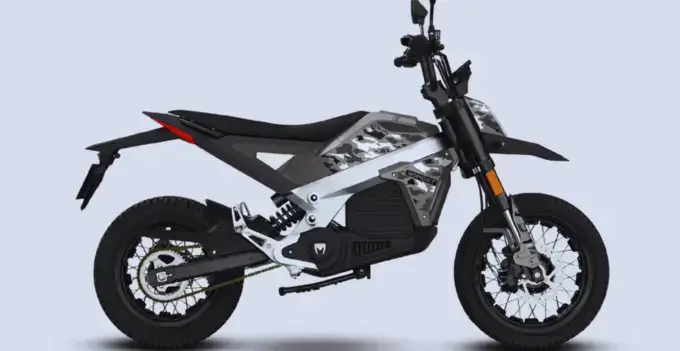
2. Dual Clutch Transmission
Dual-Clutch Transmission (DCT) is an advanced technology often found in higher-end automatic dirt bikes. It employs two separate clutches that work in parallel, allowing the bike to pre-select the next gear while the current one is engaged. This results in rapid and smooth gear changes without interrupting the power flow to the rear wheel. DCT systems provide lightning-fast shifts, enhancing acceleration, improving overall performance, and maintaining consistent power delivery across different terrains.
3. Adaptive Technology
Adaptive technology in automatic dirt bikes involves intelligent systems continuously monitoring parameters such as throttle position, wheel speed, and terrain conditions. These systems use this real-time data to adjust the transmission’s behavior, optimizing gear changes to provide better traction and control. For instance, if the bike senses slippery conditions, it might delay upshifts to maintain stability and prevent wheel spin.
Adaptive technology ensures the bike’s performance remains optimal regardless of changing environments.
4. Electric Start System
The electric start system eliminates the need for kick-starting the engine. A simple button push activates the starter motor, which turns the engine over and initiates combustion. This feature is highly convenient, especially when kick-starting is challenging, such as when the bike is stuck on a tough trail or during cold weather. Electric start systems enhance the user-friendliness of automatic dirt bikes and minimize the physical effort required to get the engine running.
5. Riding Modes
Modern automatic dirt bikes often come with multiple riding modes that allow riders to customize the bike’s behavior to suit different riding conditions. These modes adjust parameters like throttle response, power delivery, and traction control settings. For example, a “Rain” mode might soften throttle response and engage higher traction control for slippery surfaces. In contrast, a “Sport” mode could provide sharper throttle response and allow more wheel spin for aggressive riding on open trails.
Riding modes make it easier for riders to adapt to varying terrains and preferences without manually adjusting individual settings.
Manual Dirt Bike Features
Manual dirt bikes have several features that cater to riders seeking a more engaged and precise riding experience. Here’re some key features commonly found in manual dirt bikes:
1. Manual Transmission
The manual transmission is a fundamental feature of manual dirt bikes. It involves shifting gears using a clutch lever and gear shifter to match the engine’s power output to the terrain and speed. This hands-on control gives riders a direct connection to the bike. It allows for precise gear changes, making it ideal for experienced riders who enjoy the challenge and customization offered by manual shifting.
2. Clutch Control
Clutch control is a crucial aspect of riding a manual dirt bike. By manipulating the clutch lever, riders temporarily disengage the engine from the drivetrain, enabling smooth gear changes and precise control over power delivery. Mastering clutch control is essential for navigating challenging terrains, performing technical maneuvers, and preventing stalls during low-speed riding.
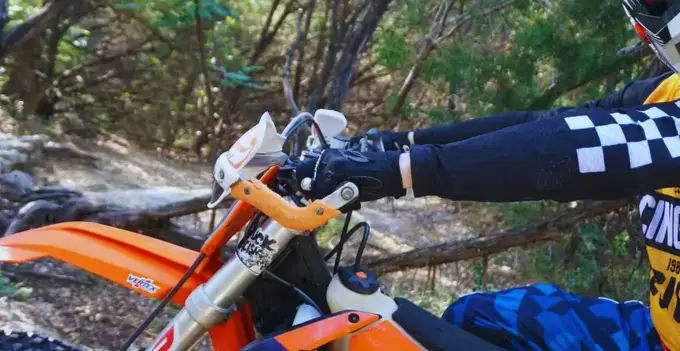
3. Power Hand Management
Manual dirt bikes often have a power and—range of engine RPM where the engine produces the most energy. Skilled riders utilize powerband management to optimize acceleration and control. They upshift and downshift to keep the engine within the powerband, maximizing performance during acceleration and maintaining power in various conditions.
4. Taller Suspension and Ground Clearance
Manual dirt bikes are designed with taller suspension systems and increased ground clearance to tackle rugged terrains. This design allows riders to navigate over obstacles like rocks, tree roots, and uneven surfaces with less risk of bottoming out or damaging the bike’s components. The increased ground clearance enhances off-road capabilities, making them suitable for motocross tracks, trails, and more.
5. Lightweight Construction
Manual dirt bikes are typically built with lightweight materials to improve maneuverability and responsiveness. A lighter bike is easier to control, especially when navigating tight turns, steep hills, or challenging obstacles. The combination of a lightweight frame, suspension components, and engine contributes to agile handling, making manual dirt bikes well-suited for technical riding.
How to Ride a Manual and Automatic Dirt Bike?
1. Riding a Manual Dirt Bike
Riding a manual dirt bike requires mastering the coordination of clutch, throttle, and gear shifting. Begin by familiarizing yourself with the clutch lever and gear shifter. Start the bike in neutral, squeeze the clutch lever, shift into first gear, and gradually release the clutch while gently twisting the throttle to engage power smoothly. To upshift, close the throttle, pull in, shift up a gear, and release the clutch while gradually opening the throttle.
To downshift, follow a similar process, blipping the throttle to match the engine’s speed. Practice in a controlled environment to refine your clutch control and gear changes, and gradually tackle more challenging terrains as you become comfortable with the mechanics.

2. Riding an Automatic Dirt Bike
Riding an automatic dirt bike is simpler, making it beginner-friendly. Start by familiarizing yourself with the controls and starting the bike using the electric start button. Accelerate and decelerate by twisting the throttle and releasing it. The automatic transmission will handle gear changes, so you won’t need to shift manually. Focus on throttle control and braking techniques to maneuver through different terrains.
Some models feature riding modes, so adjust the mode according to the terrain for optimal performance. Automatic dirt bikes are less intimidating for newcomers, allowing them to focus on fundamental riding skills without the added complexity of manual gear shifting.
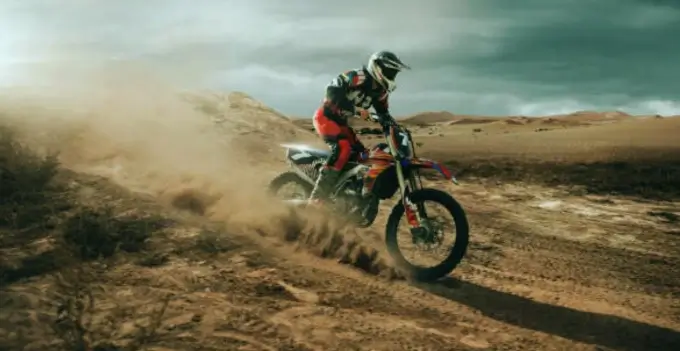
Types of Automatic and Manual Dirt Bikes
Some types of automatic and manual dirt bikes are given below:
Types of Automatic Dirt Bikes
- Honda CRF110F
- Yamaha TT-R110E
- Kawasaki KLX110R
- Suzuki DR-Z50
- Honda Trail 125
- Zero FX
- KTM Freeride E-XC
Types of Manual Dirt Bike
- Trail Bikes
- Motocross Bikes
- Enduro Bikes
- Dual-Sport Bikes
- Super moto Bikes
Pros and Cons Of Manual Dirt Bike
| Pros | Cons |
|---|---|
| Precise control over gear changes and power delivery | Learning curve for beginners |
| Skill development and improved coordination | Physical effort during clutch operation |
| Customization of power delivery for specific scenarios | Risk of stalling, especially for inexperienced riders |
| Potential for enhanced performance and acceleration | Less user-friendly, demanding more attention |
| Engagement and satisfaction from active gear changes | Limited accessibility for riders with physical limitations |
Pros and Cons Of Automatic Dirt Bike
| Pros | Cons |
|---|---|
| Easy to use, suitable for beginners | Limited customization of power delivery |
| Accessible for riders of all skill levels | Less engaging riding experience for some |
| Convenient riding experience | Performance might not match manual in some scenarios |
| Reduced stalling risk | Advanced features can lead to complex maintenance |
| Adaptive technology enhances traction | Less precision and control compared to manual |
What’s a Semi Automatic Dirt Bike?
A semi-automatic dirt bike occupies a unique middle ground between manual and automatic models, offering a distinctive approach to gear shifting. In contrast to fully manual dirt bikes requiring manual clutch control and gear changes and automatic dirt bike handling shifts autonomously, semi-automatic bikes blend aspects of both systems. They incorporate a manual clutch lever for initiating movement and coming to a stop.
Once the bike is in motion, riders can change gears without manipulating the clutch, enhancing the ease of operation. This design harmonizes simplified gear transitions with retained authority over power distribution. Semi-automatic dirt bikes are favored by those seeking a balance between the involvement of manual gear shifts and the convenience of automatic transmissions. This versatile nature makes them suitable for various terrains and rider skill levels.
How to Ride a Semi-Automatic Dirt Bike?
Riding a semi-automatic dirt bike involves a unique approach that combines manual and automatic riding elements. Start by mounting the bike and acquainting yourself with the controls, including the throttle, brake levers, gear shifter, and semi-automatic clutch. Begin in neutral, then squeeze the clutch lever and shift into first gear with your foot. Unlike a fully manual bike, you don’t need to operate the clutch for every gear change while riding.
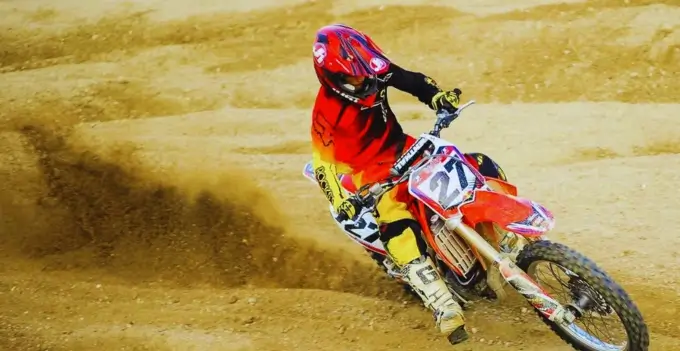
As you gain momentum, use the gear shifter to shift up or down without using the clutch, allowing the bike’s transmission to handle gear changes. To stop, pull in the clutch, downshift to first gear, and apply the brakes. The semi-automatic clutch simplifies gear changes, making it an excellent choice for those seeking a balance between manual precision and automatic convenience. Practice is vital to mastering this system and becoming adept at seamless gear transitions while enjoying off-road adventures.
Conclusion
In conclusion, the choice between manual, automatic, or semi-automatic dirt bikes ultimately hinges on individual preferences, skill levels, and desired riding experiences. Manual dirt bikes offer precise control and engagement, ideal for seasoned riders who relish the challenge of mastering gear shifts. On the other hand, automatic dirt bikes provide convenience and accessibility, making them a great starting point for beginners and those who prioritize straightforward riding.
Semi-automatic dirt bikes strike a balance, compromising manual precision and automatic ease, catering to riders seeking a middle ground. Ultimately, the best choice depends on the thrill you seek, the level of involvement you desire, and your specific riding goals. Regardless of your preference, the exhilaration of off-road adventures awaits, accompanied by the unique sensations each type of dirt bike can offer.
FAQs
How Fast Is a Semi-Automatic Dirt Bike?
The speed of a semi-automatic dirt bike varies based on factors like engine size, terrain, and rider skill. On average, smaller engine sizes, like 125cc, might achieve speeds around 45-50 mph (72-80 km/h), while larger engines, such as 450cc, can reach speeds of 70-80 mph (113-129 km/h) or more on open tracks. However, remember that terrain conditions and rider experience can significantly influence speeds.
Who Can Ride an Automatic Dirt Bike?
Automatic dirt bikes are well-suited for a wide range of riders, particularly beginners and those seeking a more effortless off-road experience. Their user-friendly nature, simplified controls, and automatic gear shifts make them accessible for riders of various skill levels, including those new to motorcycling.
Is it Hard To Ride a Manual Dirt Bike?
Riding a manual dirt bike can be challenging, especially for beginners. Learning to operate the clutch and shift gears requires practice and coordination. However, with dedication and proper training, many riders master the techniques and find the manual riding experience rewarding. The learning curve can be steep initially, but it becomes more intuitive as muscle memory develops.
Which Type of Dirt Bike is More Engaging to Ride?
Manual dirt bikes offer a more engaging experience due to the involvement required for clutch control and manual gear shifts. Some riders prefer this level of interaction and precision.
Can I Switch Between Manual and Automatic Dirt Bikes Easily? Transitioning from manual to automatic might require adjustment, as riding techniques and muscle memory differ. However, riders often find it possible to adapt over time.
Can Riders With Physical Limitations Still Ride Manual Dirt Bikes?
Riders with physical limitations might find automatic or semi-automatic dirt bikes more accommodating due to their reduced need for complex clutch and gear controls.
What Does (F) Mean in Dirt Bikes?
In the context of dirt bikes, the “F” typically stands for “Four-Stroke.” Dirt bikes can be categorized into two main types of engine configurations: two-stroke and four-stroke. The “F” indicates that a four-stroke engine powers the bike.

